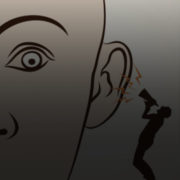Why Is It So Tough to Be Lean in a Relationship-centric Organization?
Relationship-centric organizations rely on personal networks and channels to get things done. These networks develop organically based on personalities, individual tendencies and the almost universal desire to avoid conflict.
In relationship-centric places, value streams flow along the path of least resistance. As processes are run, priorities are set and problems solved in a quid-pro-quo environment that attempts to minimize conflict. Here by definition, the optimal path is the one that causes the least friction. This always seeking-to-minimize-conflict to get things done is sometimes viewed as a strength. One will hear: “We’re great at problem-solving.” In reality, this approach is a hindrance for any business that wants to improve.
The Lean enterprise is process-centric. It seeks to understand process parameters first and then look objectively at performance. Here processes – not relationships – are meant to be optimized. People’s feelings, subjective by their very nature, are not a major part of the equation. Good performance and bad performance are simply metrics on a scale. In process-centric organizations, pointing out problems isn’t an attack on an individual or function, it’s an objective way to identify opportunities to improve.
It’s difficult to switch between the two. Relationship-centric organizations are conditioned to minimize problems that expose “my people”. Individuals gain status and their ability to perform by integrating into the network and getting along with others. Conflict isn’t constructive because it saps people’s energy and doesn’t really lead to solutions. The networks that enable work are not always obvious yet they tend to be stronger than any org chart. Changing to a new system that has a bias-for-process – something that transcends heroes and administrators – is a threat.
The status quo is strong. It’s aligned with human nature where avoiding conflict is a survival mechanism. It’s impossible to simply tell an organization to make the switch. This change is one of the hardest endeavors any organization ever pursues. It takes tremendous strength of leadership, patience, coaching and tactical implementation. But it’s doable and worth it – it’s just going to take more work, more time and greater discipline than you might initially think. In the change game, sustainability comes from endurance.
Notes:
> Relationship-centric organizations are particularly susceptible to high turnover. When key people leave, they take with them their piece of the puzzle – one that isn’t on a process map or org chart.
> Process-centric organizations honor mistakes and problems because they are easily plugged into a constructive problem-solving mechanism.
Want more content like this? Connect with us on LinkedIn






